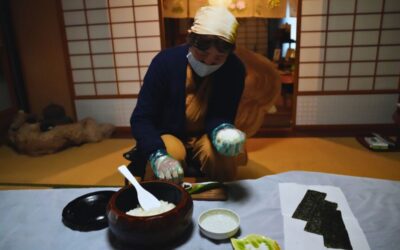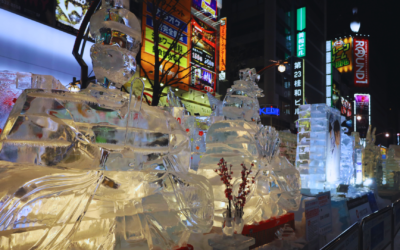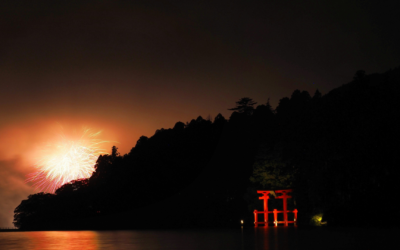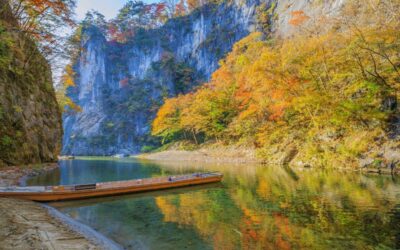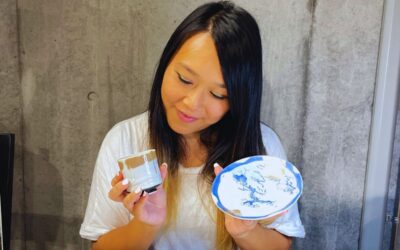Planning a trip to Japan? We’ve got you covered! If you haven’t already, make sure to check out our comprehensive guide on the 60+ travel tips for Japan to get started. Now, let’s shift our focus to Osaka, the vibrant heart of Japan’s Kansai region.
Why does Osaka often top the bucket list for visitors to Japan? It’s simple: the city’s dynamic blend of modernity, rich history, and culinary excellence is a magnetic draw.
From indulging in the world-renowned street food in Dotonbori, exploring the futuristic cityscape of Umeda, to stepping back in time at the historical Osaka Castle, Osaka’s diverse attractions ensure that every visitor finds something to cherish.
Let us give you all the insider tips and essential information you need to navigate this lively city like a pro. So, strap in and get ready to explore the must-know Osaka travel tips that will make your journey truly unforgettable!
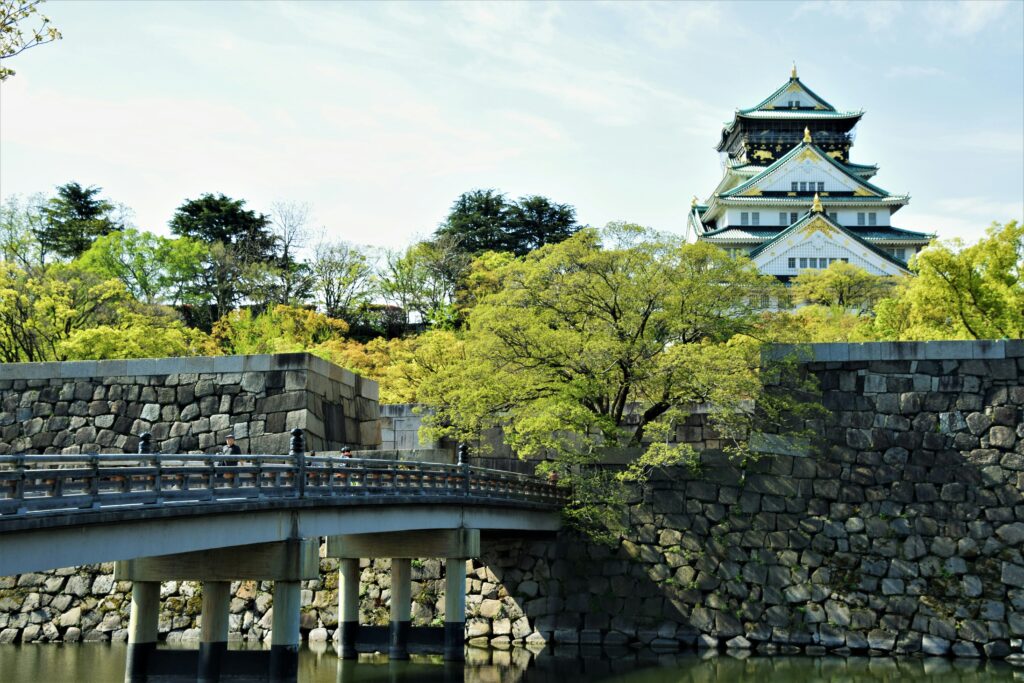
Travel Planning Tips
Before diving into the essential tips for Osaka travel, let’s set the stage for planning a trip to this vibrant and multifaceted city. Preparing for a visit to such a dynamic destination can seem daunting, but we’re here to guide you every step of the way.
1. Choose the Right Area to Stay
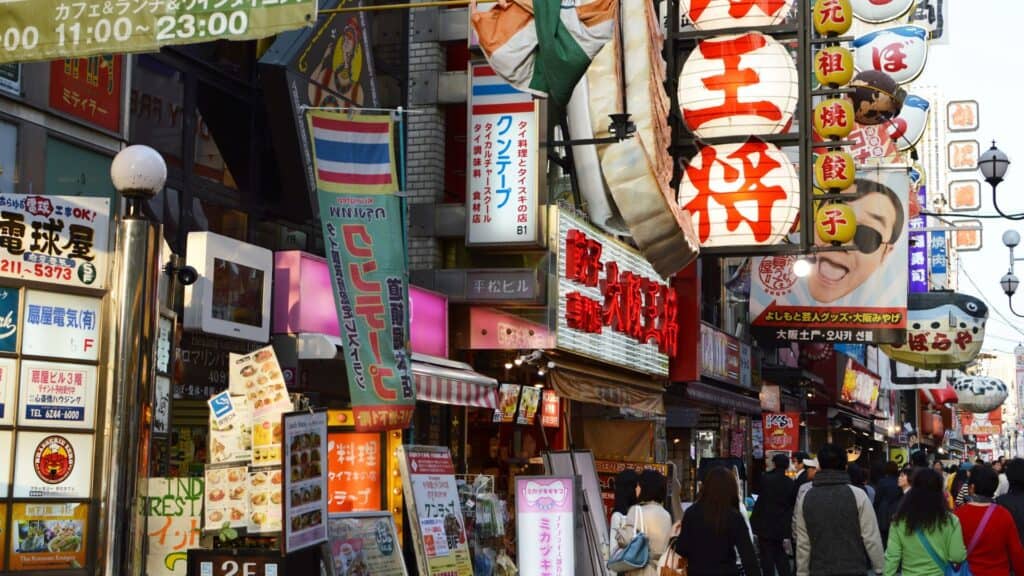
For those looking to dive into the heart of Osaka’s hustle and bustle, the Namba area is an ideal base. It’s packed with energy, offering a vibrant nightlife, endless shopping arcades, and loads of iconic street food spots — perfect if you want to be right in the middle of the action and don’t mind the crowds. You’ll be within walking distance of places like Dotonbori and Shinsaibashi, making it super convenient for first-time visitors who want to experience Osaka’s liveliest side.
On the flip side, if you’re after a quieter, more relaxed vibe, Nipponbashi is a great choice. It’s just a short walk from the chaos of Namba, but feels way more low-key. The area’s known for its laid-back charm, with easy access to temples, traditional markets, and even some quirky subcultures like anime and retro game shops. It’s a nice balance of local life and cultural exploration, without being too far from the action.
2. Book Early During Peak Seasons

Book accommodations early—especially during peak seasons like cherry blossom season, Golden Week, autumn, and the end of year/new year period.
Osaka is a year-round destination, but certain seasons see a huge spike in visitors, so booking early is essential if you want to secure your top-choice hotel or stay within budget. During cherry blossom season (late March to early April), locals and tourists alike flock to parks and riversides for hanami (flower viewing), turning peaceful spots into bustling celebration zones.
Then comes Golden Week (late April to early May), which includes four national holidays in quick succession. With most of the country off work, trains, hotels, and tourist attractions get packed fast.
Autumn (mid-November to early December) brings cooler weather and vibrant fall foliage — a major draw in places like Minoo Park and Osaka Castle grounds.
Finally, the New Year period (late December to early January) is Japan’s most important holiday. Expect large crowds at major shrines like Sumiyoshi Taisha and a spike in travel nationwide. Planning ahead gives you more options and a lot less stress.
3. Visit During Off-Peak Months

If your schedule is flexible, consider visiting Osaka during off-peak times for a more budget-friendly and laid-back trip. June, during the rainy season, tends to see fewer tourists, and accommodation prices often drop. While you might get the occasional shower, it’s a good trade-off for quieter attractions.
Summer (July to August), although hot and humid, is generally less crowded than spring or autumn. This is a good time to find travel deals, and many places stay open later in the evenings to accommodate the warmer weather. Just pack for the heat, and you’re good to go.
4. Use Google Maps for Navigation
Download Google Maps – if you haven’t already. Google Maps is highly reliable and accurate in Japan. It provides real-time information on train schedules, platform numbers, and the best routes to your destination.
Simply enter your current location and destination, and Google Maps will offer detailed step-by-step directions, including walking paths within stations. Google Maps is widely trusted by both locals and tourists for its accuracy in Japan. It regularly updates to reflect any changes in train schedules or routes.
5. Time Your Trip with Local Festivals
If you’re keen to soak up some local culture, consider timing your trip to match one of Osaka’s big seasonal festivals — they’re a brilliant way to experience the city’s vibrant traditions, food, and community vibes.
In July, the Osaka Castle Natsu Matsuri (Summer Festival) lights up the area around Osaka Castle with music, dancing, food stalls, and fireworks — a proper summer celebration in a historic setting. Around the same time, there’s the Tenjin Matsuri, held in late July, which is one of Japan’s top three festivals. It features colourful processions both on land and on boats, plus a huge fireworks display that lights up the river — it’s a real spectacle and definitely worth seeing if you’re in town.
In September, the Kishiwada Danjiri Matsuri takes things to another level with high-energy, fast-paced floats being pulled through the streets by teams of locals. It’s loud, exciting, and super intense — a proper adrenaline rush of a festival.
Then in the winter months, you can catch the Osaka Kani Doraku Crab Festival, a must for seafood lovers. Think fresh crab dishes, warming winter flavours, and a more chilled-out but still super tasty cultural experience.
No matter when you go, these events are a great way to get a feel for Osaka beyond the usual tourist spots — full of food, fun, and local flair.
6. Visit Major Attractions Early
Places like Osaka Castle, and the Dotonbori area can get very crowded, especially on weekends and holidays. To avoid the crowds (although I personally think that witnessing the huge crowd is part of the appeal of visiting Dotonbori, specifically!) and enjoy a more relaxed experience, plan to visit these attractions early in the morning.
7. Plan Ahead for Universal Studios Japan
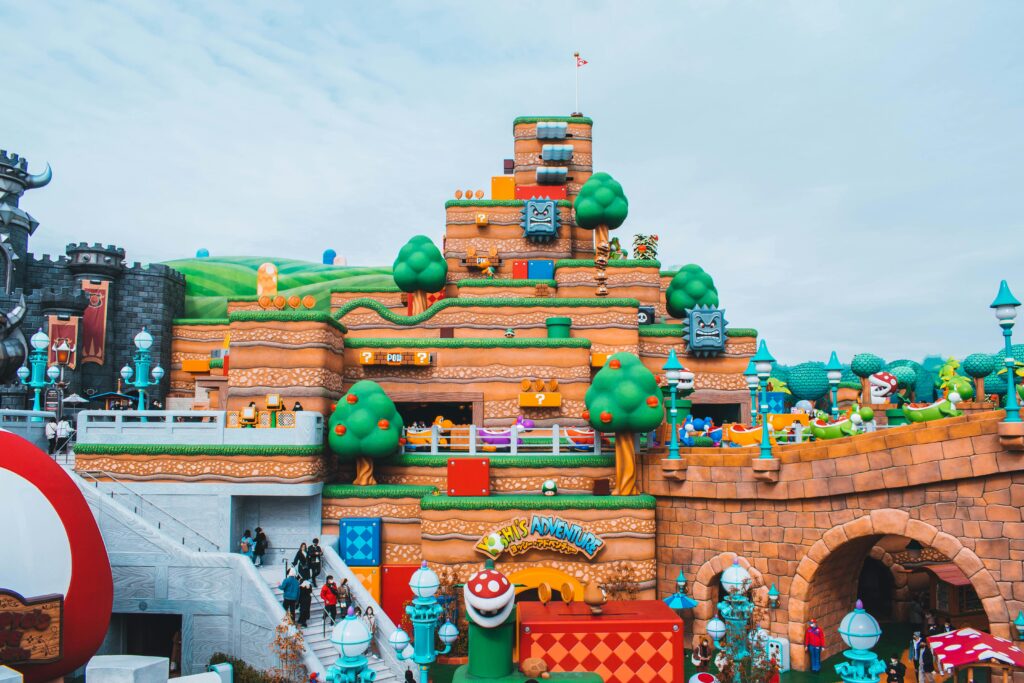
Especially if it’s your first time in Osaka, Universal Studios Japan is very likely in your itinerary. If so, you’ll want to optimise your experience at this wildly popular theme park. Here are some strategic tips to ensure you make the most of your adventure:
- Express Pass: Consider investing in an Express Pass, which will significantly reduce your wait times for popular rides and attractions. This can be particularly valuable during peak visitor times.
- Avoiding Peak Times: Try to schedule your visit on weekdays rather than weekends, and steer clear of Japanese school holidays, when the park is at its busiest. These typically include late March to early April (spring break), late July to late August (summer break), and late December to early January (winter break).
- Special Events and Shows: Universal Studios Japan is renowned for its seasonal events and special shows, which often include unique attractions and entertainment that are not available year-round. Check the park’s official website or app for the schedule of events before your visit to plan your day around these exclusive experiences.
- Early Entry: Arriving early can also make a big difference. Gates usually open before the official park opening time, allowing you to enter and position yourself closer to your must-see attractions before the crowds build up.
- Plan Your Route: Once inside, having a plan of attack is crucial. Decide in advance which rides and attractions are your top priorities and visit them first before the lines get too long.
8. See Osaka from the Water
Osaka’s river and canal systems offer a unique perspective of the city. Consider booking a river cruise along the Okawa River to see the city from a different angle, or explore the Dotonbori area by boat at night when the neon lights reflect beautifully on the water.
9. Join a Food Tour or Local Experience

Consider joining a food tour or local experience to gain insider tips and enrich your visit. These tours not only provide a deeper understanding of the area but also support local businesses, tying into the services our company offers.
10. Set Realistic Cultural Expectations
When planning your visit to Osaka, it’s important to manage expectations, especially regarding its cultural landmarks. Unlike Kyoto and Tokyo, which are famed for their extensive collections of ancient temples and shrines, Osaka offers a different vibe. Here’s what you should know:
- Osaka Castle: While a must-visit landmark, be aware that Osaka Castle has been completely rebuilt, and its interior has been converted into a modern museum. This may not appeal to those seeking an authentic historical experience similar to castles that have preserved their original conditions.
- Temples and Shrines: Osaka doesn’t boast as many traditional temples and shrines as Kyoto or Tokyo, but there are still some notable sites that are worth a visit:
- Shitennō-ji: Founded in 593 AD, Shitennō-ji is considered Japan’s first Buddhist temple and features a tranquil garden and a pagoda that can be climbed for a view of the surrounding area.
- Sumiyoshi Taisha: One of Japan’s oldest Shinto shrines, Sumiyoshi Taisha is famous for its distinctive, straight-roofed style and a serene setting that contrasts with the urban sprawl surrounding it.
- Osaka Tenmangu: This shrine is especially popular during the Tenjin Matsuri, one of Japan’s three major festivals, celebrated here with great pomp and spectacle in late July.
- Shopping and Urban Exploration: Osaka is often envisioned as a mirror to Tokyo’s extensive shopping districts and neon-lit streets.
While Osaka does feature bustling areas like Namba and Umeda, which are filled with shops and entertainment, the city generally has a more laid-back vibe compared to Tokyo’s often overwhelming buzz and size. The shopping districts are extensive but more manageable, and often less crowded, offering a different kind of urban charm.
11. Use Osaka as a Day Trip Base
Despite its bustling city vibe, Osaka’s main attractions can be fully experienced in just 1-2 days. This includes exploring the lively districts like Namba and visiting significant landmarks such as Osaka Castle.
However, after soaking in the city’s highlights, you can use Osaka as a convenient base for day trips to nearby cities. More details on these recommended day trips are provided in tip #14, helping you craft a perfectly balanced exploration of Osaka and its surroundings.
Area Tips

Osaka is a dynamic city with a diverse range of neighbourhoods, each offering unique experiences and attractions. Here are some area-specific tips to help you explore the distinct flavors of Osaka to their fullest.
12. Explore Iconic Neighbourhoods
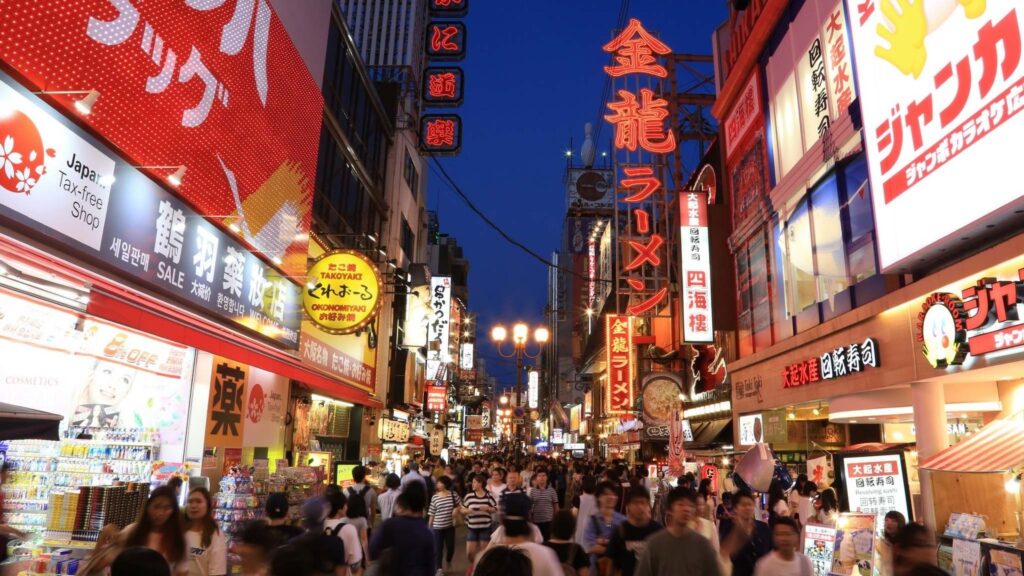
Consider visiting some of the city’s most famous areas and tourist favourites. Even if you’re not a fan of crowds, these incredibly popular spots are worth a visit for various unique reasons:
- Dotonbori: This area is the heart of Osaka’s nightlife and street food scene, renowned for the glowing Glico Man sign and its vibrant, bustling atmosphere. It’s a great place to try local dishes like takoyaki and okonomiyaki and enjoy the lively ambiance of the city.
- Umeda: Known for its impressive skyscrapers and shopping complexes, Umeda is a must-visit for anyone looking to experience Osaka’s modern urban vibe. The area is also home to the Umeda Sky Building, with its spectacular floating garden observatory offering panoramic views of the city.
- Namba: As another central hub of Osaka, Namba boasts a range of entertainment options, from shopping at Shinsaibashi to theater shows and lively bars. It’s a bustling area that captures the energetic spirit of Osaka.
13. Discover Lesser-Known Districts
If you’re looking to venture beyond the usual tourist paths in Osaka, several lesser-known neighbourhoods offer unique local experiences:
- Shinsekai: Step back in time in Shinsekai, a neighbourhood that retains a nostalgic feel of old Osaka. This area is celebrated for its retro charm, the iconic Tsutenkaku Tower, and its streets lined with vendors selling kushikatsu (deep-fried skewered meat and vegetables).
- Nakazakicho: For a quieter escape, head to Nakazakicho. This quaint neighbourhood is known for its artsy atmosphere, featuring vintage shops and cozy cafes. It’s the ideal place for those seeking a more laid-back and creative environment.
- Tenma: Another gem is Tenma, renowned for its lively local market atmosphere. Tenma is packed with izakayas (Japanese pubs) and small eateries, making it a fantastic spot to mingle with locals and sample authentic Osaka cuisine.
14. Take Day Trips from Osaka

If you have enough time, also consider taking these day trips from Osaka:
- Kobe: Just a short train ride away, Kobe offers a cosmopolitan atmosphere with its renowned beef, fashionable architecture, and the scenic harbor area.
- Nara: Known for its historic temples and friendly deer roaming freely in Nara Park, this ancient city provides a peaceful retreat from the energetic vibe of Osaka.
- Himeji: Another excellent day trip option is Himeji, famous for its stunning white egret castle, Himeji Castle, which is considered one of Japan’s most spectacular castles. The city offers a historical experience that contrasts nicely with the urban atmosphere of Osaka.
15. Visit Local Markets for Authentic Vibes
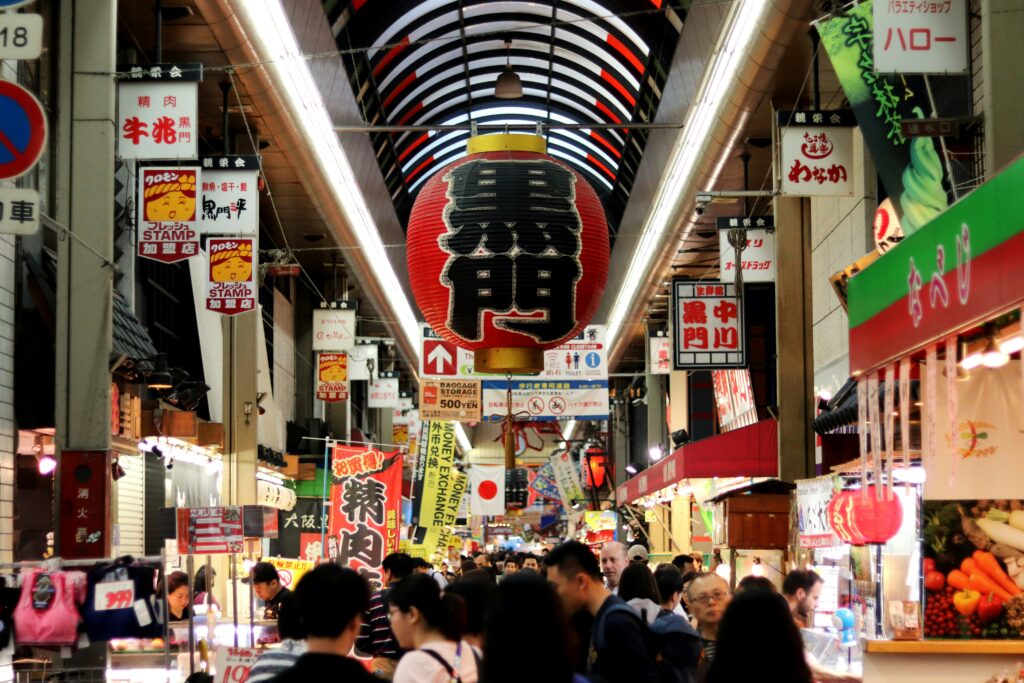
Beyond the main attractions, visiting local markets like Kuromon Ichiba can provide a deeper insight into everyday Osaka life, known for its foodie delights. Here, you can sample a variety of fresh foods, from seafood to street snacks, and observe local buying habits.
16. Know Areas to Approach with Caution
While Osaka is generally a safe city for travellers, like any major urban area, it has certain neighbourhoods that are less advisable for tourists, especially when traveling with children. Here are a few areas where extra caution is recommended:
- Shinsekai: Despite its tourist appeal and retro charm, Shinsekai can feel a bit edgier, especially at night. The area around Tsutenkaku Tower is vibrant and bustling during the day but can attract a rougher crowd after dark.
- Airin District (Kamagasaki): This area is known for its high population of day laborers and a rougher street scene, which might not be suitable for families or those unfamiliar with urban environments. It’s not typically featured in tourist itineraries, but it’s good to be aware if you find yourself exploring off the beaten path.
- Nishinari: Similar to Shinsekai, Nishinari is known for its cheaper lodging options and is often frequented by budget travellers. While it offers an authentic slice of Osaka life, its gritty nature might not be comfortable or safe for all travellers, particularly at night.
While these areas can provide interesting cultural insights, they should be visited with caution, and perhaps avoided during nighttime to ensure a safe and enjoyable trip to Osaka. Always keep personal belongings secure and stay aware of your surroundings, especially when with children.
Culture and Etiquette tips
Navigating Osaka’s diverse neighbourhoods involves understanding the unique cultural nuances of each area. Here are some tailored tips to help you adapt to the cultural landscape of Osaka:
17. Dress Neatly in Business Districts
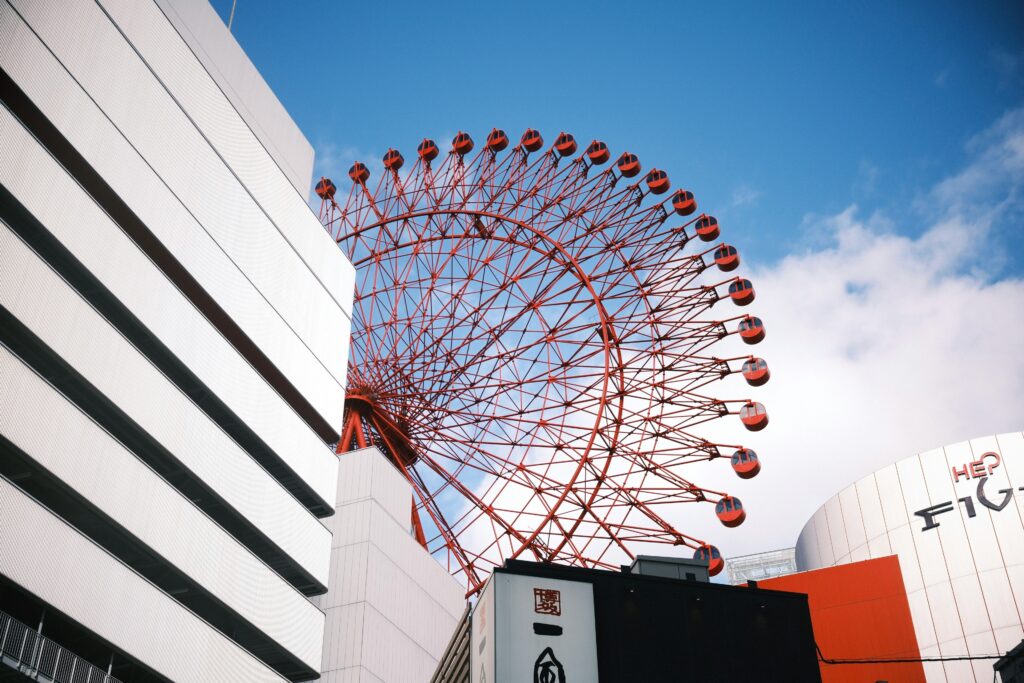
In business and upscale shopping districts like Umeda and Namba, it is advisable to dress neatly and act with decorum. These areas are bustling hubs of commerce and socializing, where a more polished appearance and polite behavior are appreciated.
Keep your voice moderate in volume and be courteous with shop staff and dining personnel. Punctuality is particularly respected, so make sure to be on time for any reservations or meetings.
18. Show Respect in Traditional Sites
In traditional areas such as Osaka Castle Park and the historic district of Shinsekai, you should show a heightened level of respect. While visiting cultural sites like temples or historic landmarks, dress conservatively and observe all local customs and rules. These gestures of respect not only reflect well on you as a visitor but also help preserve the dignity of these culturally significant places.
19. Be Casual in Youthful Areas
For more casual and youthful experiences, head to districts like Amerikamura and Dotonbori. These areas are known for their vibrant street life and casual, eclectic atmosphere. Here, the dress code is more relaxed, and the environment generally supports a more expressive style.
While it’s fine to enjoy the lively scene and perhaps dress more informally, remember to maintain basic politeness and be mindful of your surroundings, especially in crowded settings.
20. Stay Quiet in Residential Neighbourhoods
When exploring residential or quieter neighbourhoods such as Nakazakicho, take care to respect the local community by keeping noise to a minimum and observing local practices, such as sorting trash correctly if eating on the go. These areas offer a glimpse into the everyday lives of Osakans and should be treated with consideration.
21. Embrace Osakan Directness
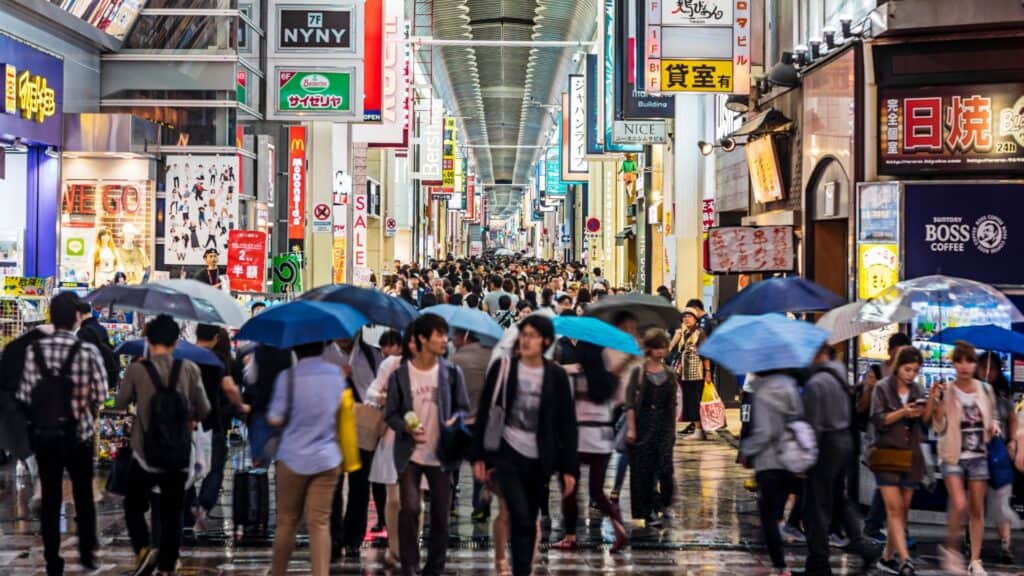
Osakans are famously blunt and straightforward, a trait that is often perceived as refreshing honesty. When interacting with locals, don’t be surprised by their directness—this is a normal way of speaking here and is not meant to offend.
This manner is especially evident in local markets and restaurants, where vendors and staff might seem more outspoken compared to other parts of Japan. Embrace this aspect of Osakan culture as it reflects their lively, down-to-earth nature. Understanding this can enhance your interactions and even lead to more engaging and genuine exchanges.
22. Follow Local Walking Etiquette
When walking in Osaka, remember that the local custom is slightly different from Tokyo and the rest of Japan. In Osaka, it’s customary to stand on the right and walk on the left on escalators and sidewalks. This is the opposite of what you might experience in Tokyo, where people generally stand on the left and pass on the right.
Tips Related to Transportation and Getting Around
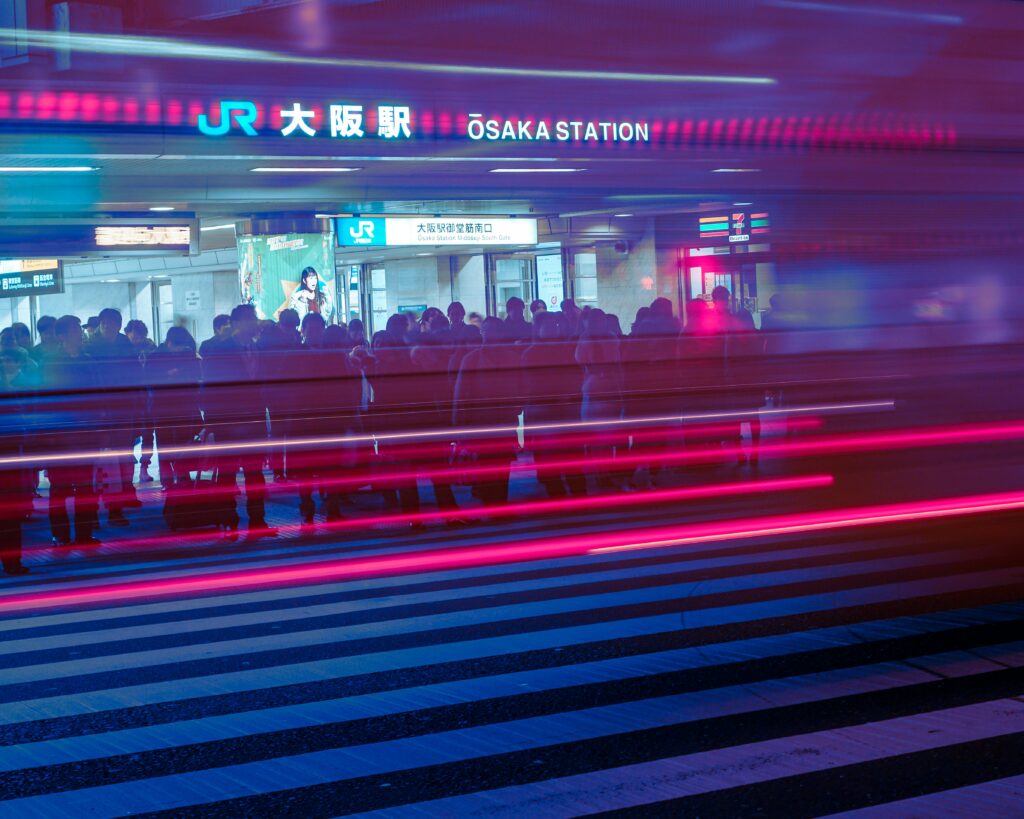
Navigating Osaka can be a smooth and efficient experience with the right know-how and preparation. Here are some practical tips for getting around the city using its extensive transportation system:
23. Use IC Cards
If you already have an IC card like Suica from your travels in other parts of Japan, you won’t need to purchase a separate card for your stay in Osaka. Suica, along with other cards such as ICOCA and PiTaPa, works seamlessly across Osaka’s extensive network of trains, subways, and buses.
These rechargeable smart cards are not only essential for smooth and efficient travel throughout the Kansai region but are also convenient for making purchases at many convenience stores, vending machines, and even some restaurants. This makes navigating and enjoying Osaka both simple and hassle-free.
24. Avoid Rush Hour Crowds
Osaka’s rush hours typically occur from 7:30 AM to 9:00 AM and from 5:00 PM to 7:00 PM. During these times, public transport can get extremely crowded, particularly on main lines such as the Midosuji Line which connects major areas like Umeda and Namba.
Utilizing apps like Google Maps to plan your travel can help you find less crowded routes or optimal travel times.
25. Know the Busiest Train Lines
Also know in advance that these specific train lines that tend to be busy:
- Midosuji Line: It’s the primary subway line running north to south, connecting major hubs like Shin-Osaka, Umeda, Shinsaibashi, and Namba. This line can be particularly busy during peak times.
- JR Osaka Loop Line: This line circles the city and is a convenient way to access different parts of Osaka, including Osaka Castle and Universal Studios Japan. It can also get crowded, especially near major stations.
- Hankyu Line: Connecting Umeda with Kyoto and Kobe, this line is heavily utilised, especially during weekends when people travel for leisure.
26. Handle Train Crowds Like a Pro
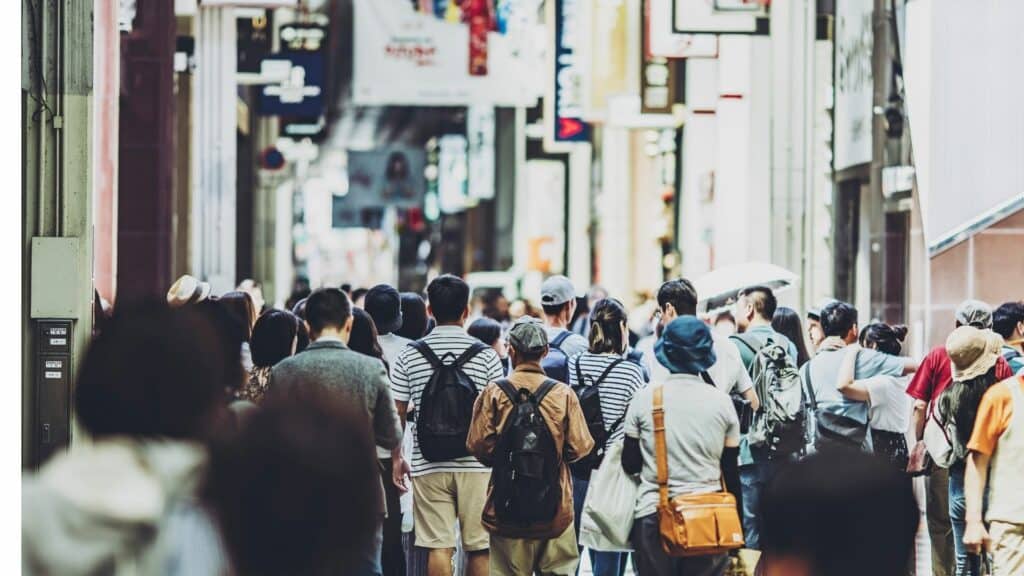
If you find yourself caught in the thick of Osaka’s rush hour or navigating a packed train station, don’t panic — just follow the local rhythm. The key is to move with purpose and efficiency. Keep things flowing by stepping aside quickly when exiting a train, and avoid blocking narrow passageways or standing in front of doors.
On escalators, it’s standard in Osaka to stand on the right and let others pass on the left, which is actually the opposite of Tokyo’s etiquette. During peak times, women may want to take advantage of women-only cars for a more relaxed and comfortable ride — they’re usually clearly marked and located at specific ends of the train.
Also, try to pack light and keep your luggage compact; this will help you move more freely through stations and avoid bumping into people on busy platforms or tight train aisles. Small gestures like these make a big difference and help you blend in with the local commuting culture.
27. Rent a Bike to Explore Freely
With a relatively flat topography, Osaka is conducive to cycling. The city offers several bike rental services, such as the Osaka Bike Share, where you can pick up and drop off bicycles at various locations. This is an excellent way to see the city at your own pace and access areas that are less reachable by public transport.
Just make sure to follow a few important cycling rules: always ride on the left side of the road, obey traffic signals, and stick to designated bike lanes where possible. If you’re on a shared path, be courteous to pedestrians — ring your bell lightly if needed, but don’t ride aggressively.
Helmets aren’t legally required but are still a smart idea for safety. And when you’re done with your ride, always park in designated bike parking areas to avoid fines or getting your bike impounded. It’s a chill, eco-friendly, and fun way to explore.
28. Use Taxis Sparingly

Taxis in Osaka can be pricey, so they’re best used for short hops, late-night rides, or if you’re carrying heavy luggage and want to avoid busy stations. Thankfully, they’re also extremely reliable, clean, and safe.
Google Maps makes it easy to estimate your fare in advance, which is great for budget-conscious travellers. To tell if a taxi’s available, look for a red-lit sign in the front window or on the dashboard that usually says 空車, which means the taxi is free. If you see that, you’re good to flag it down. For those who like to book ahead, taxi-hailing apps like Go and Uber are both widely used and often integrated with Google Maps for seamless booking.
Payment is simple, too: many taxis accept IC cards like Suica or PASMO, and most also take credit cards, so you don’t need to scramble for cash. It’s a great option to have in your back pocket, even if you don’t use it every day.
29. Get the Osaka Amazing Pass

Consider taking advantage of the Osaka Amazing Pass. This pass not only provides unlimited use of public transportation within the city but also includes free entry to numerous attractions like Osaka Castle, Umeda Sky Building, and the Tempozan Ferris Wheel. It’s an economical choice if you’re planning extensive sightseeing. Here are some basic info about the pass:
- Types and Cost: ¥3,550 for a one-day pass.
- Transportation: Provides unlimited travel on the Osaka Metro, Osaka City buses, and additional private rail lines like Hankyu, Hanshin, and Nankai within the day, and not 24 hours from first usage.
- Attractions: Grants free entry to over 40 attractions including Osaka Castle, Umeda Sky Building, and Tsutenkaku Tower.
- Purchasing Locations: Can be bought online with a voucher exchangeable at places like the Kansai Tourist Information Center at Kansai International Airport.
- Additional Benefits: Includes discounts and special offers at various facilities and stores across Osaka.
Packing Tips
Packing for Osaka also requires careful consideration to adapt to its varied climate and urban environment. Here are some packing tips for your trip to Osaka:
30. Pack for the Season
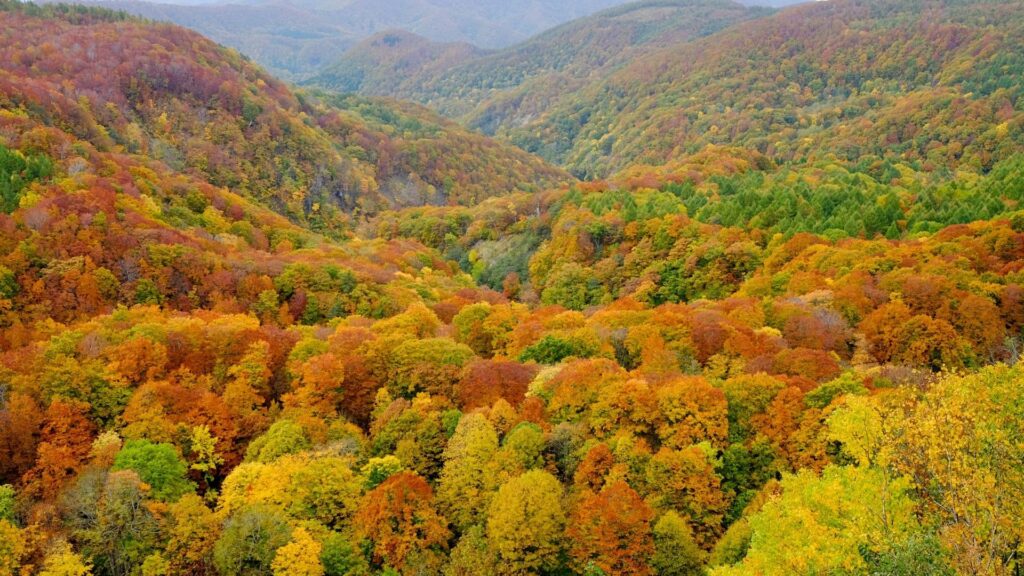
Osaka’s weather shifts quite a bit depending on the time of year, so packing the right gear is key to staying comfortable throughout your trip. In spring (March to May), the temperatures are pleasant but unpredictable, so layering is your best friend. A cardigan or light jacket plus a compact umbrella will serve you well, especially with the chance of spring showers.
Summer (June to August) gets hot and seriously humid, so breathable fabrics like cotton or linen are essential. You’ll also want a portable fan, sunhat, and sunnies to survive the heat.
Autumn (September to November) is one of the nicest times to visit — mild weather, beautiful foliage, and cooler evenings. Bring light sweaters or jackets for layering.
In winter (December to February), it gets chilly but not freezing. A warm coat, scarf, and gloves will keep you toasty without overdoing it. Osaka doesn’t usually get snow, but the wind can make it feel colder than it looks on the forecast.
31. Bring Layers for Indoor A/C
Osaka is full of contrasts when it comes to climate control — one minute you’re in a sun-soaked street like Dotonbori, and the next you’re inside an air-conditioned museum or mall. For this reason, it’s smart to pack a light, versatile jacket you can throw on when stepping into icy indoor spaces, especially in summer.
Places like Osaka Aquarium Kaiyukan or department stores often blast the AC, and the sudden temperature shifts can catch you off guard if you’re only dressed for the heat. Packing layers will help you stay comfy and avoid feeling like a popsicle mid-sightseeing.
32. Carry a Foldable Umbrella
Rain can sneak up on you in Osaka, especially during tsuyu (the rainy season) in June and early July. Even outside that time, pop-up showers aren’t uncommon, so keeping a small, foldable umbrella in your day bag is a simple way to stay dry without needing to buy a new one from a konbini every time the sky turns grey. Trust us — you’ll be glad you packed it when that drizzle hits right as you’re crossing a bridge in Namba.
33. Wear Comfy Walking Shoes
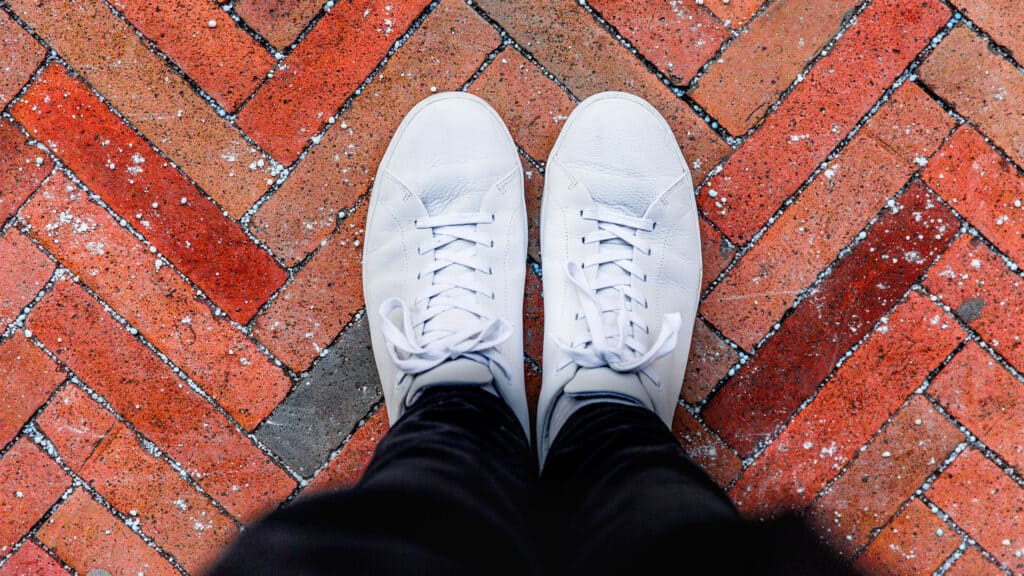
Osaka is a city you’ll want to explore on foot — from shopping arcades to shrine strolls, there’s a lot of ground to cover. That means comfy shoes are a must. Opt for well-cushioned trainers or walking flats to keep your feet happy during long days out.
If you’ve got dinner plans or tickets to a show, throw in a slightly dressier pair as well, but there’s no need to go overboard. Most restaurants and venues are fine with clean, casual footwear. Prioritising comfort will let you focus on enjoying the city instead of nursing sore feet.
Tips for After Arriving in Osaka
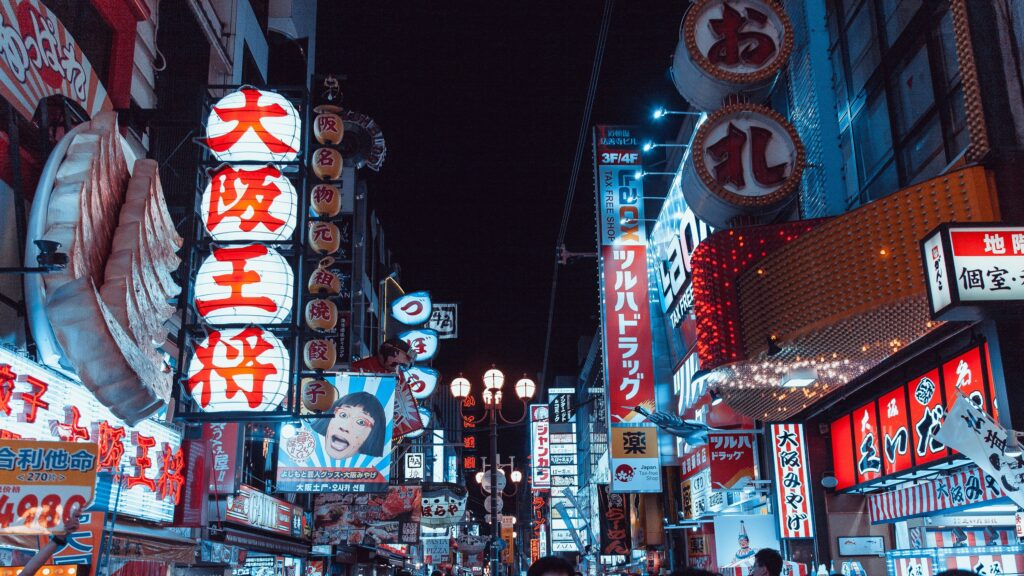
Arriving in Osaka is an exciting moment, but it can also be daunting. To help you settle in quickly and start your adventure smoothly, here are tips for your first few hours in the city.
34. Know How to Get to Osaka from Kansai Airport (KIX)
Getting from Kansai International Airport to the heart of Osaka is easy, thanks to several efficient transport options. One of the fastest and most comfortable routes is the JR Haruka Express, which connects KIX to Shin-Osaka and Osaka Stations in around 50 minutes. Tickets cost approximately ¥2,850, and trains run every 30 minutes during peak times, making it a reliable and stress-free choice, especially if you’re heading to destinations on the JR line.
Another great option is the Nankai Railway, offering both the Airport Express and the Limited Express Rapi:t. These trains go directly to Namba Station, a major hub in the southern part of Osaka. The Rapi:t service takes about 35–45 minutes and costs around ¥1,450, with departures every 15–20 minutes during busy times. It’s an excellent choice for travellers staying in or around Namba or Shinsaibashi.
If you prefer a more direct connection to your hotel or don’t want to deal with luggage on public transport, limousine buses might be your best bet. These buses connect KIX with major districts like Umeda, Namba, and even some hotels, with fares ranging from ¥1,100 to ¥1,550. They run frequently throughout the day and offer a comfortable ride with plenty of luggage space.
And finally, if convenience is your top priority and budget isn’t a concern, taxis are available 24/7 right outside the terminal. They provide a door-to-door service, but they are by far the most expensive option, with fares to central Osaka typically ranging from ¥15,000 to ¥20,000 depending on traffic and distance. Still, for groups or late-night arrivals, they can be worth the splurge.
35. Know How to Get to Osaka from Itami Airport
Osaka International Airport (Itami) is closer to the city than Kansai Airport and primarily handles domestic flights, making it a convenient entry point if you’re coming from other parts of Japan. The easiest and most budget-friendly way to get into the city from Itami is by airport limousine bus.
These buses offer direct routes to central Osaka areas like Umeda and Namba. Fares are usually around ¥650, and buses run approximately every 20 minutes during peak hours, making them both affordable and efficient.
For those with lots of luggage or who prefer a more private ride, taxis are readily available outside the airport. A trip to central Osaka, such as Umeda, typically costs about ¥5,000. While more expensive than the bus, it’s a solid choice for those who prioritise convenience or are travelling in a group.
36. Know the Best Places to Exchange Currency
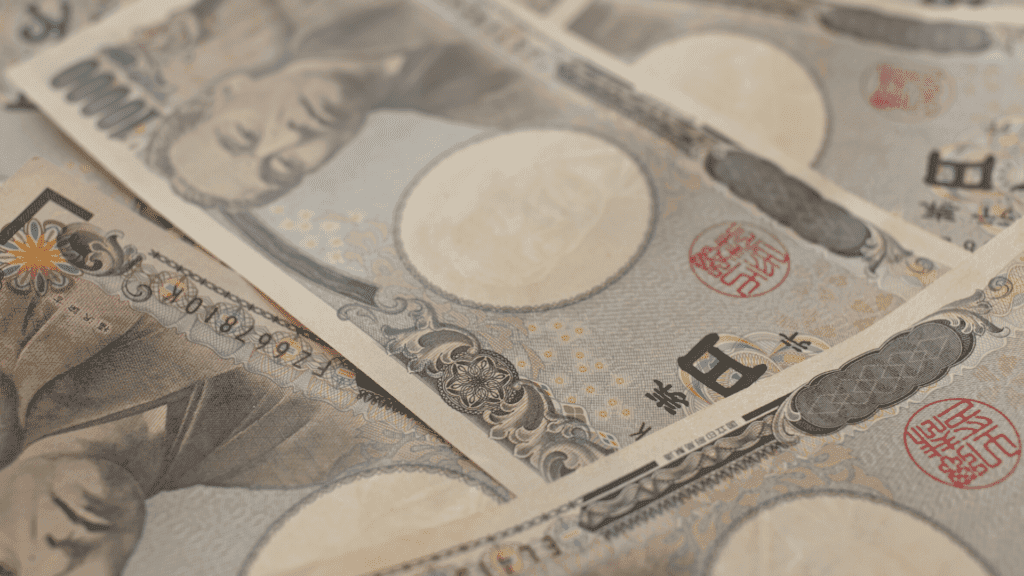
Exchanging currency in Osaka is pretty straightforward, and there are several convenient options available to travellers. Both Kansai International and Itami airports have currency exchange counters, which are perfect for grabbing some yen as soon as you land. That said, rates at the airport can be slightly less favourable than those in the city.
For a better exchange rate and easy access, many travellers use ATMs inside convenience stores like 7-Eleven, Lawson, and FamilyMart. These ATMs accept most foreign cards, are reliable, and usually offer competitive exchange rates. They’re also found pretty much everywhere in the city, which makes withdrawing yen on the go super easy.
If you’re planning to exchange larger amounts, it’s worth visiting a dedicated currency exchange centre. These are especially common in high-traffic areas like Namba and Umeda. Shops such as Travelex or other local exchange counters often provide better rates than the airport and are easy to find with a quick Google Maps search. Whether you prefer cash exchange or using your card at ATMs, Osaka makes the process smooth and accessible.
37. Try Osaka’s Must-Eat Dishes
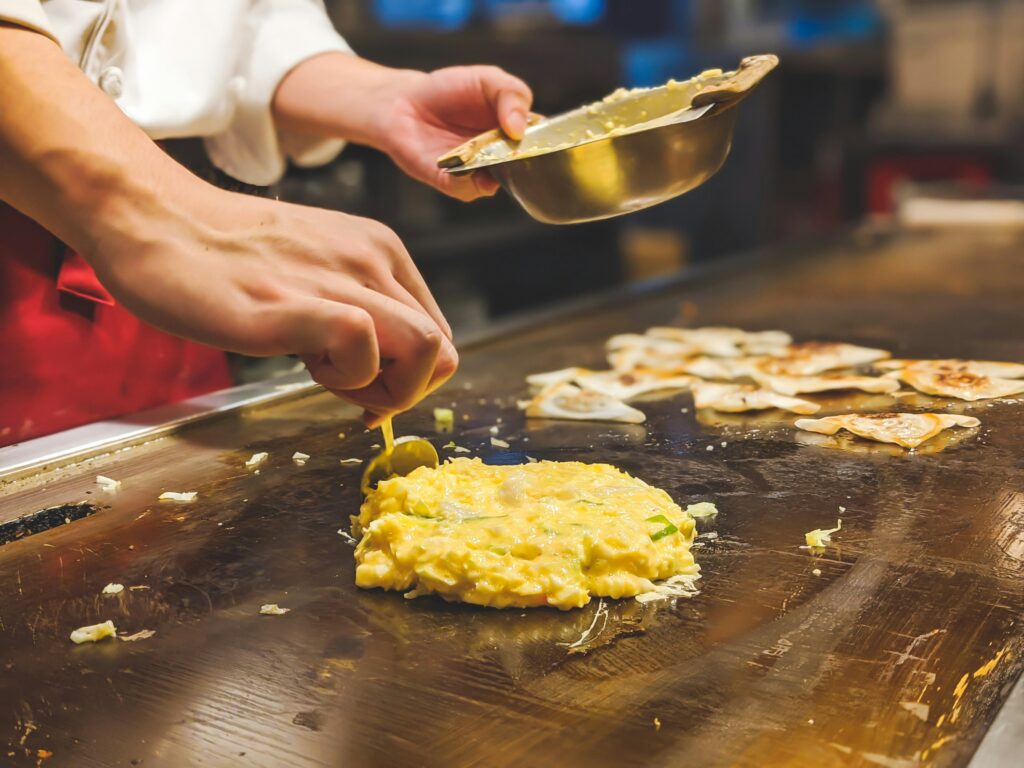
Osaka has earned its nickname as “Japan’s kitchen” for a reason. The city’s food scene is rich, bold, and full of personality, making it a dream destination for foodies. Start your culinary adventure with takoyaki, those piping hot, crispy-on-the-outside, gooey-on-the-inside octopus balls that are often sold at street stalls and markets. They’re a local staple and a must-try.
Next up, don’t miss okonomiyaki, a savoury pancake loaded with cabbage, meats or seafood, and topped with a mix of tangy sauces, mayo, seaweed flakes, and bonito shavings that dance from the heat. It’s hearty, customisable, and so, so satisfying. And if you’re after something fried and fabulous, go for kushikatsu — skewered meat, seafood, and veggies, battered and deep-fried to golden perfection. You’ll find entire streets dedicated to this dish, especially in the Shinsekai area.
Sampling these iconic eats isn’t just about filling your belly — it’s how you tap into Osaka’s fun-loving, food-obsessed spirit. So go ahead, dive in chopsticks-first and taste your way through the city.
38. Eat Like a Local in Each Neighbourhood
Upon arriving in Osaka, take the opportunity to explore the diverse neighbourhoods and their culinary offerings. While the city boasts many famous and viral restaurants, don’t hesitate to wander off the beaten path.
As you discover different areas, you’ll likely stumble upon local spots that are less frequented by tourists but highly cherished by residents. This exploration not only enriches your experience of the city but also allows you to taste authentic Osakan cuisine as locals do.
Ready to Explore Osaka?
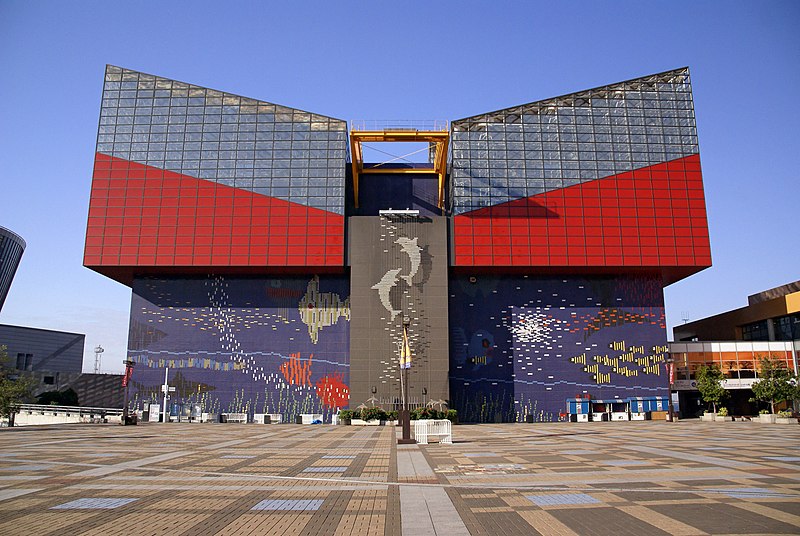
With these 38 tips in hand, you’re all set to experience Osaka like a local. From savoring the culinary delights of Dotonbori to taking in the breathtaking views from the Umeda Sky Building, you’re in for an unforgettable adventure in Japan’s vibrant food capital.
Remember, the journey doesn’t end here. Dive into our other guides for insights on Kyoto, Tokyo, and beyond. Each city offers its own unique magic waiting to be discovered. Enjoy your travels and happy exploring!



